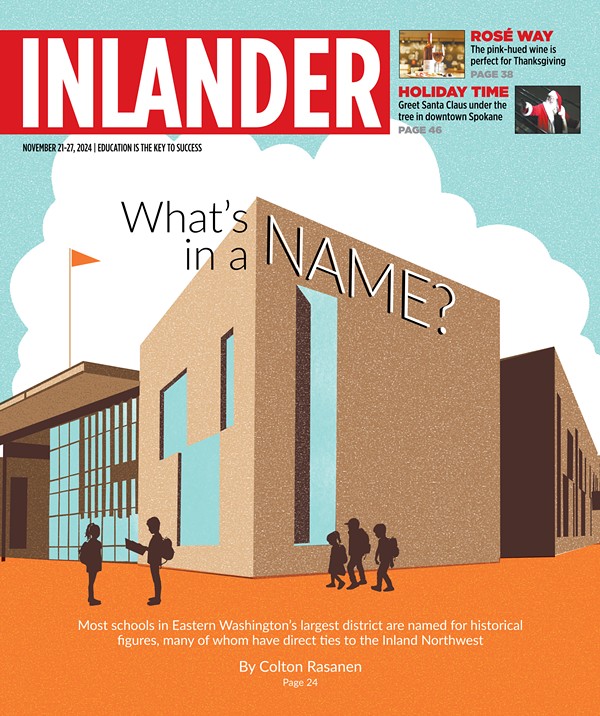Local news organizations are dying — and that is not news.
The decline has been rapid, spectacularly so. The tech-bubble recession of 2001 set the collapse in motion. The 2008 recession dealt a near-fatal blow made far worse by the subsequent pandemic.
There are other reasons, of course. Technology advances moved key print and broadcast advertising categories to the internet. The post-2016 political divide led many Americans, especially on the right, to express their distrust by walking away from mainstream news sources. And news organizations, notoriously poor at marketing and customer service, have contributed to their own collapse.
It can be argued that news media leaders were slow to recognize the warning signs. There is some truth in that. In any event, the economic, technological and credibility forces were not to be slowed, let alone stopped.
Is there light at the end of this long, dark media tunnel? Washington’s Sen. Maria Cantwell, a Democrat, and Rep. Dan Newhouse, a Republican, may have one answer. Newhouse was among a bipartisan group of House members who last month introduced the Local Journalism Sustainability Act. Cantwell and two Democrat colleagues introduced the companion Senate bill last week.
The collapse of local news organizations imperils our democracy. Cantwell, Newhouse, and their co-sponsors understand the threat, hence their proposal, a solution that journalists would have considered unthinkable, and unsupportable, just a few years ago.
Just how serious is the local news crisis?
Numbers can be hard to come by. The newspaper industry’s lead association stopped reporting circulation and advertising declines years ago at the request of publishers battered to submission by unrelenting bad news. A variety of organizations routinely report employment numbers, but there are wide variations in methodology and numbers.
We do know this: Something on the order of 150 local newspapers, including weeklies, have closed just during the pandemic. Newspaper newsroom employment has declined somewhere between 30 and 50 percent since 2008, depending on the source. That amounts to somewhere between 30,000 and 40,000 reporters lost.
Local television news has suffered as well, though election-year advertising revenue mitigates the damage somewhat. Still, local reporting staffs are a fraction of what they were just 20 years ago.
When I became editor of the Spokesman-Review in 2002, the newsroom staff totaled roughly 140 professionals. At last report, the total news staff is something on the order of 60, give or take. And compared to many local newspapers, the Spokesman is relatively well-staffed, even boasting a D.C.-based reporter hired through the Report for America grant program.
But think about the numbers for a moment. Reporters no longer cover local or state governments in community after community. The traditional role of the press — the Fourth Estate charged with watchdogging government and public life — is history now in cities big and small.
With tens of thousands of print and broadcast reporters gone, there can be no making up for lost reporting capacity even as digital news organizations slowly grow.
There are some exceptions. Certainly, the largest national newspapers — the New York Times, The Washington Post, the big cable news networks — are prospering, beneficiaries of the Trump-driven demand for aggressive national reporting or punditry.
Recognizing the existential threat to democracy, supporters of the Local Journalism Sustainability Act of 2021 would offer some modest financial support for struggling news organizations.
According to a Seattle Times report, one tax credit, for news consumers, would cover up to $250 in subscription costs for the act’s first five years. Small businesses employing up to 50 people, would receive rebates of up to $5,000 for advertising placed in local news outlets during that same period.
The act would also give local news outlets a tax break for every journalist they employ, up to $25,000 per journalist the first year after the bill's passage and up to $15,000 per year in the subsequent four years.
That last could provide a newspaper like the Spokesman with more than $1 million-plus annually.
There is no specific cost estimate yet, although Cantwell has said she expects support could total somewhat more than $2 billion.
The sustainability act is no permanent solution. Think of it as a budgetary finger in the dike, giving media organizations time to consider more permanent solutions.
For most of my time as a working reporter and editor, I was strongly opposed to any government support for the news industry. The founders gave us the First Amendment for a reason. They articulated the watchdog role — we think of the press as the Fourth Estate — to provide independent oversight of government and public institutions.
If we were to get in bed with government, our independence would be irrevocably compromised, I argued.
But we have reached a tipping point and the old arguments must give way to new realities. Declines in local news capacity pose a greater threat to our democracy than the modest tax breaks and credits proposed by Cantwell and Newhouse.
Most of the major news associations agree. Support for the Local Journalism Sustainability Act is essentially unanimous within the industry.
Can the act win congressional approval? Probably not, would be my guess. House approval is possible as bipartisan sponsorship might suggest. But in the Senate, as currently constituted, support for the mainstream press is nearly non-existent with Republicans still in thrall to Donald Trump who dangerously declared the press to be enemies of the people.
Legislation in the blue states, including Washington and Oregon, is more likely to prevail. But state budget concerns, fueled by the pandemic, make any quick action unlikely.
Bottom line: No state or national help will arrive in time to fundamentally stem the media collapse.
I once lost sleep worrying about journalism’s loss of independence. I worry now about the greater loss our democracy will suffer as local news dies. ♦
Steven A. Smith is a former editor of the Spokesman-Review. Prior to joining the S-R, Smith was editor for two years at the Statesman Journal, a Gannett newspaper in Salem, Oregon, and was for five years editor and vice president of the Gazette, a Freedom Communications newspaper in Colorado Springs, Colorado. Smith is now clinical associate professor emeritus in the School of Journalism and Mass Media at the University of Idaho having retired from full-time teaching at the end of May 2020. Reach him at [email protected].
















